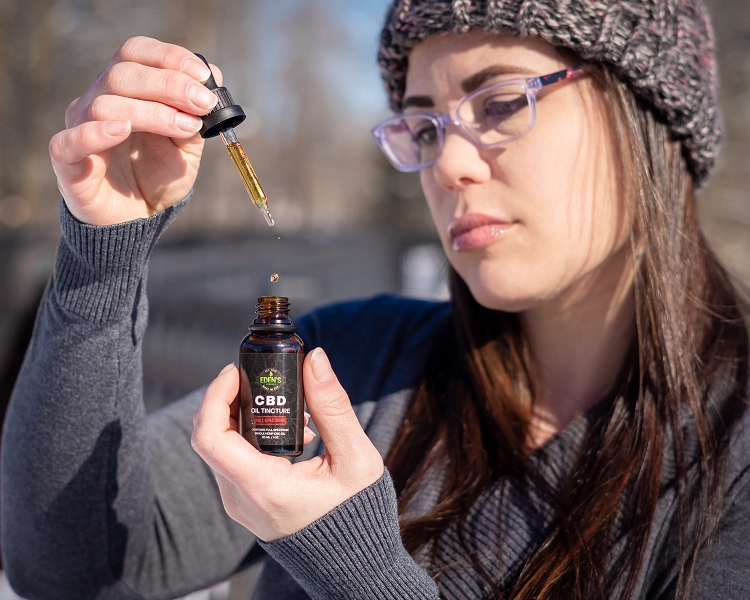 CBD is gaining more and more notoriety for its numeroushealth benefitsand the wide variety of CBD-infused products in the market. It has quickly become one of the most popular natural remedies for many different health conditions.
CBD is gaining more and more notoriety for its numeroushealth benefitsand the wide variety of CBD-infused products in the market. It has quickly become one of the most popular natural remedies for many different health conditions.
CBD (cannabidiol) is a compound found in the cannabis plant, and unlike THC, it does not have psychoactive effects. This means it does not give you the high effect that marijuana is known from.
One of the most widely used products out there is CBD oil, which is made by extracting the CBD from a cannabis plant, then mixing it with carrier oils like hemp seed oil or coconut oil.
CBD oil is ingested sublingually, meaning you place a few drops under your tongue, after which it is directly absorbed into the bloodstream.
CBD Oil And Nausea
Among the numerous health benefits of CBD oil is dealing with nausea. We all know how uncomfortable nausea and vomiting can be. It makes everyday tasks difficult to complete, and it can interfere with our appetite.
Some causes of nausea include head injuries, migraines, gastrointestinal disorders, pregnancy, chemotherapy, pregnancy, ear disorders, etc.
The good news is that CBD oil can help.
There have been numerous studies to determine how CBD oil helps with nausea, and a recent study done on animals showed that it helps by interacting with serotonin receptors, a hormone that influences how we feel, with respect to mood and general well-being.
 While CBD has a significant role in reducing nausea, researchers have concluded that the THC present in CBD oil plays a bigger part in managing nausea This is why so many people use full spectrum CBD for nausea.
While CBD has a significant role in reducing nausea, researchers have concluded that the THC present in CBD oil plays a bigger part in managing nausea This is why so many people use full spectrum CBD for nausea.
In human studies, researchers determined that CBD oil is very helpful in managing chemotherapy-induced nausea for cancer patients and also helps with their appetite. Those claims were backed up by a study done in 2016 on people who underwent chemotherapy and took Sativex.
The drug contained both CBD and THC, and it subdued nauseaeffectively.
How To Take CBD Oil For Nausea
CBD oil is taken by placing a few drops under the tongue, where it is then absorbed directly into your bloodstream. That is one of the fastest ways to take CBD, and the effects can be stronger compared to a CBD edible.
CBD can also come in capsules which you have to swallow with water. Since they have to pass through the digestive system, it can take some time to feel the effects, and they might not be as strong as when consumed sublingually.
Before taking CBD as medication to deal with nausea, you should consult with your doctor first. It is also important to know that CBD oil does not have a one-fits-all dosage for combating nausea or any other diseases.
Different dosages work differently for different people depending on factors like weight, height, concentration of CBD oil, what you are treating, and the effect that you desire.
To determine the right dosage for you, it takes trial and error. Start with a small dosage and progressively increase the amount. For example you could begin with 20-40 mg daily and increase it by 5mg after a week.
 Do that until you get to a point where you feel that the CBD oil is working on reducing your nausea symptoms effectively.
Do that until you get to a point where you feel that the CBD oil is working on reducing your nausea symptoms effectively.
If it comes to a point where you start experiencing side effects, it is important to reduce the dosage to a safe one, or in some cases, stop using CBD completely. To measure the amount of CBD you take every time, use the dropper that comes with the bottle.
While there are no severe side effects to CBD oil, in rare cases you might experience some of the following mild ones;
' Diarrhea.
' Change in appetite.
' Fatigue.
' Weight changes.
' Dizziness.
To reduce those side effects, it is best to avoid taking high-fat meals alongside CBD oils.
 How To Choose The Best CBD For Nausea
How To Choose The Best CBD For Nausea
With the CBD market expanding every day, there are more and more people selling substandard CBD products which may not deliver the best results. Therefore, it is important to be careful when shopping for your CBD oil, to avoid taking home fake products.
Some of the things to consider include;
' Potency- If you want CBD oil that will completely take away your nausea, small CBD amounts will not do the job. You need to look for CBD oils that have more than just a few CBD milligrams per serving.
' Third-party testing- Buying CBD oil that has undergone third-party testing reassures you of the level of CBD and THC in it. It also means that the oil has been tested for foreign and dangerous substances like pesticides and heavy metals.
' CBD source- Look at where the cannabis plant was grown and how it was grown because hemp plants tend to absorb a lot of the chemicals in the soil where they were grown. Ensure that it is organic hemp, not GMO, and was grown without any chemicals.
' Ingredients- For nausea relief, go for CBD oil that has added ingredients like ginger and peppermint which help in dealing with nausea.
' Extraction process- Consider how the CBD was extracted from the plant and make sure that no chemicals were used in the process as that may affect the quality of the CBD oil or cause you more harm. CO2 extraction is considered the safest method.
 ' Reviews- It is important to see what other customers said about your supplier and if the products were satisfactory.
' Reviews- It is important to see what other customers said about your supplier and if the products were satisfactory.
Before using CBD oil for nausea, it is important to consult your doctor and ask them if CBD oil is a treatment option, because it may cause negative effects when mixed with medications.
The doctor will also advise you on the correct dosage, depending on your condition and health history.
For maximum nausea relief, go for full-spectrum CBD oils instead of an isolated form of CBD because isolates may strip the oil of terpenes plus other cannabinoids that may reduce its anti-nausea benefits.
If you are, however, planning to stay away from THC completely, go for broad-spectrum CBD oils that have all the cannabidiol compounds but no THC.


